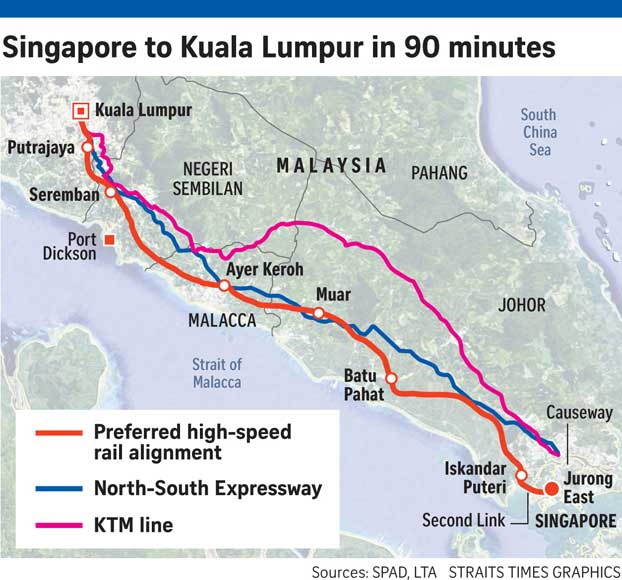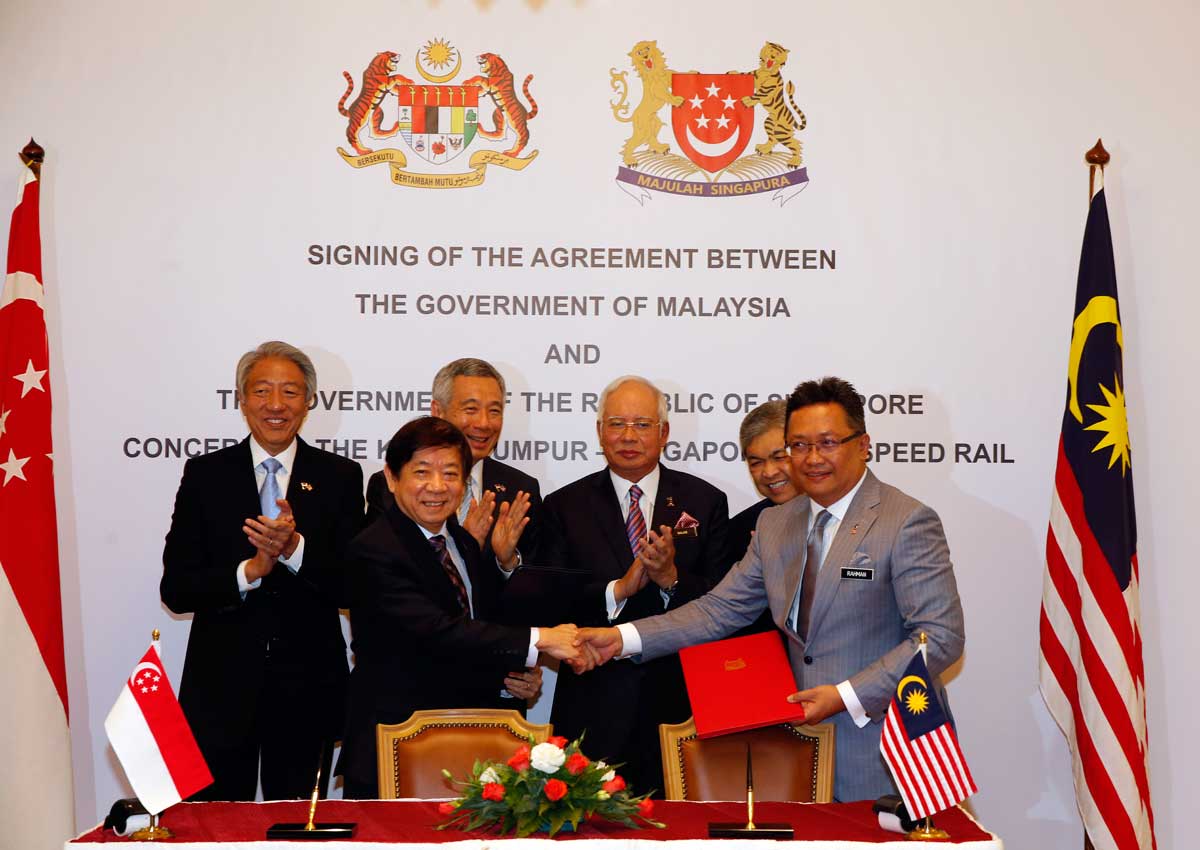Competitive bids are expected when tenders are called for the high-speed rail systems between Singapore and Malaysia, and the best one will be chosen, Prime Minister Lee Hsien Loong said yesterday.
Speaking at a press conference after the annual Leaders’ Retreat, Mr Lee said the future high-speed rail line between Singapore and Kuala Lumpur has attracted plenty of interest from industry players.
In an interview with Bernama last month, Mr Lee said the Japanese, Koreans and Chinese – who have high-speed rail systems – have been lobbying hard for the contract, and deciding which one is best would be a very difficult decision.
Asked yesterday if the contract could be awarded to a consortium, he said it was “premature to speculate on the permutations”.
He added: “If they get together, I think that is for the good, but I have not seen it happen very frequently – the Chinese, Koreans and Japanese getting together.”

Singapore and Malaysia signed a legally binding pact for a 350km high-speed rail line yesterday.
It formalises, among other things, financing, commercial and procurement frameworks for the project.
In response to queries on how much the line is expected to cost, a Singapore Transport Ministry spokesman said it is “not appropriate” to announce cost estimates now as they are subject to further engineering studies, and could influence the bids submitted for tenders.

A target date has been set for the non-stop service between Singapore and Kuala Lumpur: Dec 31, 2026.
Asked how the two governments would ensure that the project remains on track in the current global economic slowdown, Malaysian Prime Minister Najib Razak said it is largely viable.
Also, the governments would be able to get long-term financing for it.
On whether the line would be extended farther north beyond Kuala Lumpur, Datuk Seri Najib said doing so would add to its complexity and magnitude. It should be confined to between Kuala Lumpur and Singapore, he added.
Most of the line – 335km of it – will be in Malaysia, with the remaining 15km in Singapore.
Three services will ply along the dual-track line, which will be designed for a top speed of 350kmh.
There will be an express service between the two terminal stations – Jurong East in Singapore and the upcoming Bandar Malaysia development in Kuala Lumpur; a shorter shuttle service will also connect Singapore and Iskandar Puteri in Johor.
Both countries will call a joint tender for an international operator to run the non-stop and shuttle services.
Malaysia will also call a tender for an operator to run a separate domestic service from Kuala Lumpur to Iskandar Puteri that will make stops at five other stations along the way: Putrajaya, Seremban, Ayer Keroh, Muar and Batu Pahat.
In scheduling the train services, the international operator will have priority over the domestic operator.
Mr Lee said Singapore will continue to work closely with Malaysia in a joint ministerial committee for the Iskandar region.
He noted that joint venture projects between Temasek Holdings and Malaysian sovereign wealth fund Khazanah Nasional in Iskandar Malaysia are progressing well, citing the Afiniti Medini and Avira Medini developments.
The projects by Khazanah-Temasek joint venture M+S in Singapore are also progressing well, he added.
Iskandar Puteri is one of three locations where Customs, immigration and quarantine facilities of both countries will be located.
Singapore and Kuala Lumpur are the other two.
This means international-bound travellers will need to clear Customs and immigration only once, when departing the respective countries.
With many more people expected to commute between the two sides when the line is completed, security has been raised as a concern.
Asked about it, Mr Lee said security was a major issue discussed and resolved in planning for the line.
There has to be a balance between ensuring secure borders and making it convenient for passengers to clear immigration, he said.
“There must be trust and understanding, and mutual agreement as to what the powers are, what the arrangements are, what you can do, what the fail-safe responsibilities are in case somebody tries to break through,” he added.
“We have thought long and hard about this, we need this both for the HSR (high-speed rail) as well as for the RTS (Rapid Transit System link), and we will make it work.”
roysim@sph.com.sg

This article was first published on December 14, 2016.
Get a copy of The Straits Times or go to straitstimes.com for more stories.






